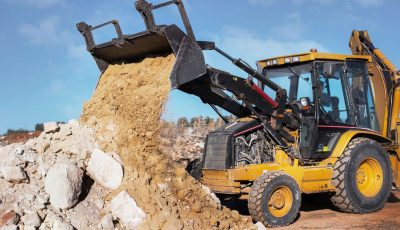Feds ask for oversight on live-fire plan’s impact on Tinian landmarks
The construction and use of firing ranges on Tinian may severely impact the island’s national historical landmark area, says the Advisory Council on Historic Preservation in a written request to the National Park Service last week, urging that “unresolved issues” of this U.S. military undertaking be assessed.
The preservation council has formally initiated a Section 213 report under the National Historic Preservation Act, about three weeks after Saipan Tribune revealed that there has been a push from within consulting agencies for this report, which can be sought for federal undertakings on national historical landmarks that prove to be “particularly difficult and/or controversial,” according to ACHP.
ACHP is the federal agency overseeing historic preservation across the United States.
The report, if completed, will cover the Marine Corps Forces Pacific’s plans to construct and use firing ranges on the island of Tinian.
Under the NHPA, the National Park Service will prepare the report at the request of ACHP.
Since the MarForPac project involves combined arms, live-fire, maneuver training, danger zones, and restricted airspace, there have been concerns on how compatible the project is with the historical character of the northern part of Tinian, which is home to World War II landing beaches and airfields, among others.
John M. Fowler, executive director of ACHP, formalized the council’s request in a letter to the National Park Service on Friday.
In Fowler’s letter, copies of which were obtained by Saipan Tribune yesterday, ACHP asks the Park Service to assess how established training areas within the Tinian Landing Beaches, Ushi Point, and North Fields, Tinian Island National Historic Landmark—collectively known as the “Tinian NHL”—will “affect the integrity and physical interpretation” of the landmark.
“Many unresolved issues…for this proposed undertaking pertain to the compatibility of this development with the historic character of this NHL,” Fowler wrote.
ACHP believes there may be severe impacts to the NHL that limit its “future interpretation” and “heritage tourism.” That would include the potential loss of access “given the absence of a predictable schedule for use of the range,” Fowler said.
Unresolved issues
“Currently, while the land the Tinian NHL is on is under military use lease, it is for all [intents and] purposes open to the public,” Fowler said. “To better assess the unresolved issues regarding the project’s potential effects to the NHL, we request the NPS’ views on the impact to the integrity of the NHL posed by the proposed volume, design, and location of new construction.”
“We would also ask that you provide recommendations as to measures that could avoid, minimize, or mitigate adverse effects to the NHL should the CJMT go forward as currently proposed,” Fowler said.
ACHP’s letter hints at and reflects what the administration of Gov. Eloy S. Inos has been saying for awhile now—that what the military is proposing seems to be incompatible and unfit for its location on Tinian, Saipan Tribune gathered yesterday.
Dentons LLC, a firm hired by Inos to consult on the live-fire project, said the project’s repeated use of heavy, tracked vehicle within the North Field landmark risks damage to historic roadways and runways. They say the construction of gravel roads adjacent to historic roads would still alter the cultural landscape. The firm also notes that the live-fire project would have significant, direct impacts on nearly 200 National Register-eligible sites on Tinian.
“These are not suitable locations for destructive live-fire training,” Dentons writes in their comments on the project’s environmental impact documents. “Reasonable alternatives must be evaluated.”
The CNMI Historic Preservation Office, for their part, said the project ignores Section 110 of the NHPA, which requires a heightened standard of care with respect to landmarks to the “maximum extent possible.”
HPO says the project provides no information that could be described as “planning and actions to minimize harm” as mandated by federal law.
In other words, Section 110 of NHPA tasks federal agencies that plan to build on an historical landmark to do everything to enhance and protect the sited area, Saipan Tribune learned. However, for the CJMT project, administration officials believe the Navy has done the exact opposite, and that the entire historical district—of landing beaches, airfields, and cultural sites, among others—could suffer.



























